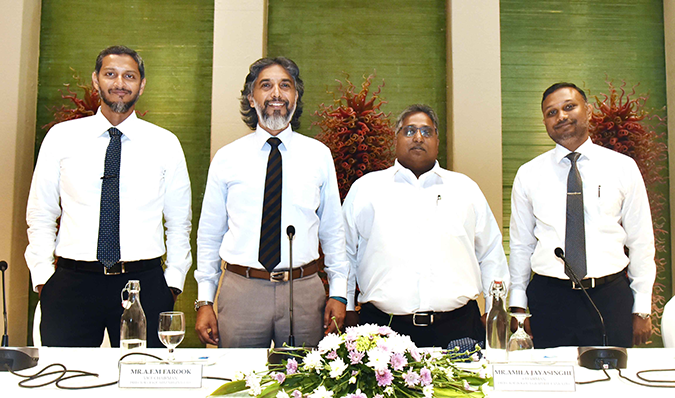Business
‘SL’s minerals sector is a big one but the govt. has made it a puny one’

By Hiran H. Senewiratne
Sri Lanka’s minerals sector is a big one but the government has made it a small sector. But it has a huge potential to become one of the country’s major foreign exchange earners. Industry officials were in broad agreement on these points recently at the inauguration in Colombo of the Chamber of Mineral Exporters.
“The mineral sand export industry currently generates around US$ 65 million a year but if we really focus on this sector that amount could be increased to US $ 120 million. Lack of a mineral policy and the non-implementation of a proper survey by any authority on this sector, resulted in the country losing potential export revenue from this area, F. A Farook, Vice Chairman of the CME said.
Farook added: “The practice of giving 12-month mining permits compared to those of 10 to 15 years, as in Australia, would make investors run away. This was a regulatory hurdle that had to be rectified fast.
“Our permits are generally valid for one year. We’ve all been in this sector for the last twenty plus years, so we have some experience on how to get things done, so we will stay.
“But if you are to attract somebody else to come from outside, they will not come.”
CME chairman Amila Jayasinghe said: “As soon as they hear that the mining or environmental license lasts only one year, and that there is a requirement to renew them each year, they will run away, because that is too much of a risk for an investor.
“There should be a proper mineral sands policy and the government should take steps to develop a thrust industry and provide permits for more than one year.
“There is no country in the world with a permit of one year validity. Usually, it is valid for 10 to 15 years. That is something that has to be rectified very soon to attract foreign investments.
“The Australian High Commissioner had recently mentioned that there were companies that were willing to invest but that the investment environment here was not conducive.
“Mineral firms had to deal with a minimum of eight separate state agencies to function on a day-to-day basis. For 15 years Sri Lanka had been talking about a ‘one stop shop’ for approvals, but it has not yet happened.
“There has to be transparency and clarity in how decisions are made, since there are a large number of government agencies involved.
“There should be a level playing field for all and processes should not be made easy for one or two people.
“It was not the availability of raw materials but the accessibility of raw materials that is the key constraint.”
CME Secretary Dr. Sandun Dalpatadu said: “The industry is willing to comply with environmental regulations. Foreign buyers also require mineral extraction to be sustainable. In some cases land had to be restored to the original condition, or if areas are deforested, other areas have to be forested.
“Mining also affects communities and firms and it is a sensitive subject. There are resources in land owned by state agencies for which mineral rights have to be streamlined with a collaborative initiative to generate jobs and also increase exports.”
“In addition to issuing what was probably the shortest duration mining permit in the world, Sri Lanka was probably charging the highest royalty, which was levied as a value added tax at the point of export instead of being imposed on the pit head cost, Chamber sources said.